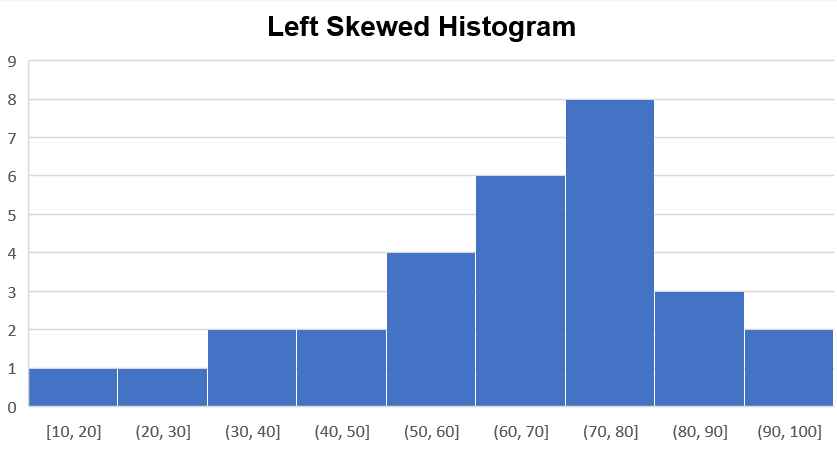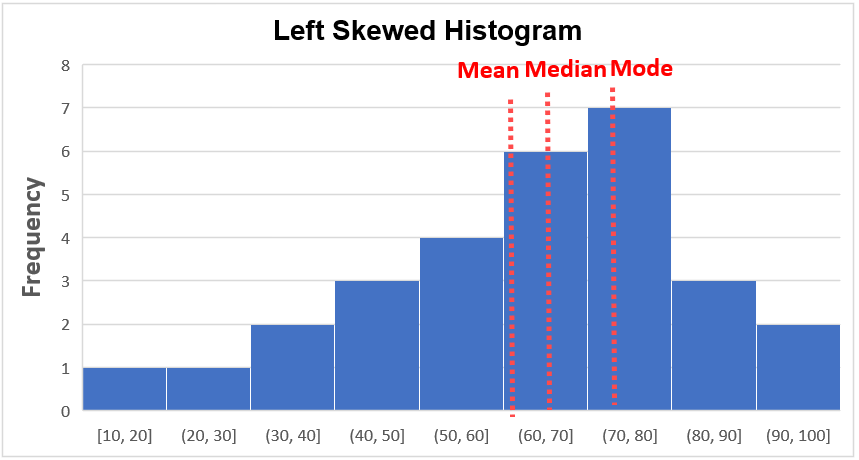This article explains how to interpret a left skewed histogram with examples.
A left skewed histogram is a histogram where the tail on the left side is longer than usual, and the highest point (peak) of the graph is towards the right. In this situation, the large values appear more often in the data, while the smaller values are not as common. It is also known as negatively skewed histogram.
Properties of Left Skewed Histogram
Here are main properties of a left skewed histogram:
- Mean, Median and Mode: In a left-skewed distribution, the mode (most frequently occurring value) will be greater than the median (middle value), and the median will be greater than the mean.
Mode ≥ Median ≥ Mean
- Long Left Tail: The left-skewed histogram will have a long tail on the left-hand side, indicating that there are a few data points that are much lower than the rest of the data.
Reasons for Left Skewed Histogram
Let's understand what leads to a left skewed histogram.
- Few Low Values: There will be a few data points with low values that contribute to the extended left tail. These low values can significantly impact the mean, causing it to be lower than the median. For example, imagine a group of people's incomes. Most of them earn average amounts, but a few earn a lot less. These low earners pull the overall average down, making it lower than what most people actually earn, which is median (middle value).
- Majority of Data on the Right: Most of the data points are positioned towards the right side of the histogram, indicating that the higher values are more common in the dataset.
Examples of Left Skewed Histogram
Here is a list of real-world examples that display a left skewed histogram:
1. Income Distribution: A left-skewed histogram of the salaries of all employees in a company would show that most employees have salaries in the middle range but there are a few employees who have very low salaries.
Let's take income of 10 employees and compare mean and median based on the data.
Mean: $52,500
Median: $60,000
2. Age at Retirement: A left-skewed histogram of age at retirement would show that most people retire in their 60s but there are a few people who takes early retirement in their 30s or 40s.
Let's find out the mean, median and mode retirement age based on the following data.
Mean: 45.5
Median: 55
Mode: 55
3. Test Scores: In education, test scores often follow a left-skewed distribution. Most students score around the average but a few students score poorly.




Share Share Tweet